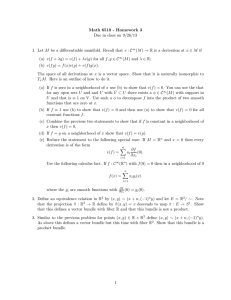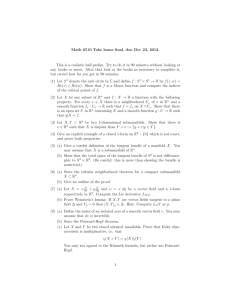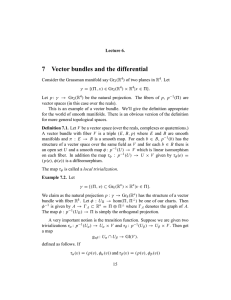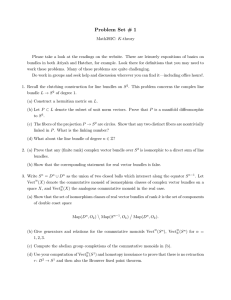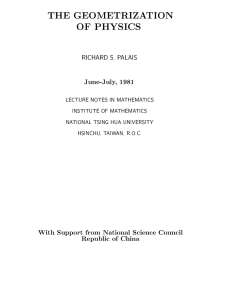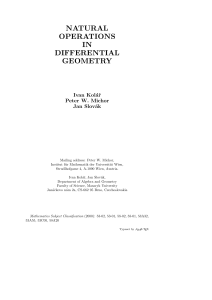8
advertisement
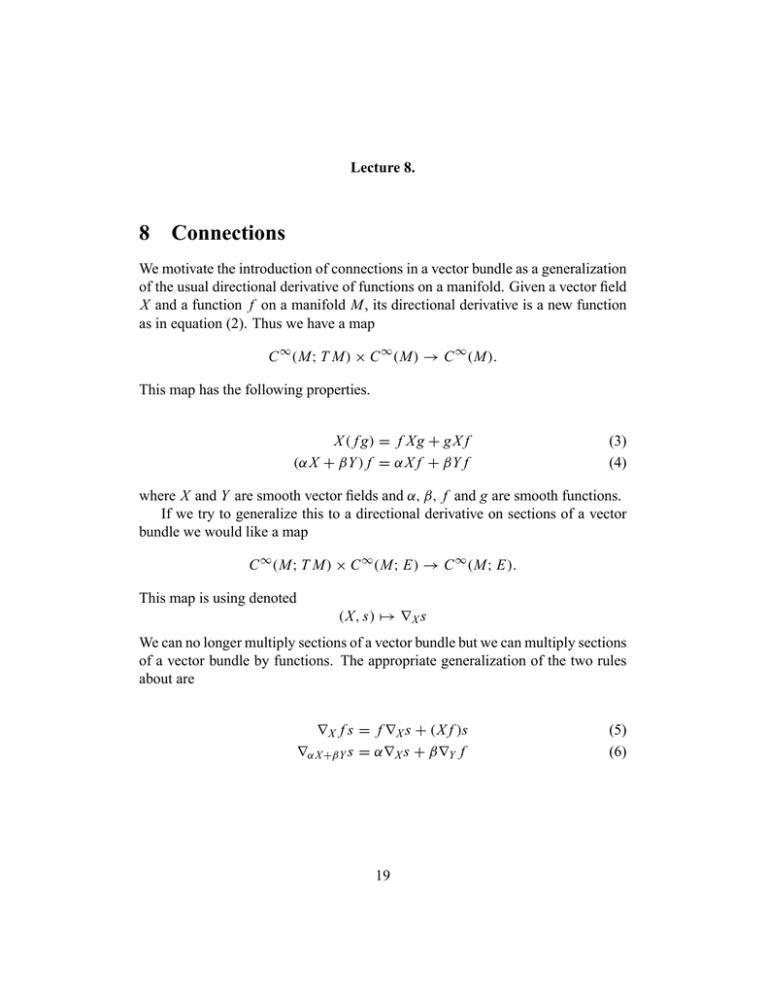
Lecture 8.
8
Connections
We motivate the introduction of connections in a vector bundle as a generalization
of the usual directional derivative of functions on a manifold. Given a vector field
X and a function f on a manifold M, its directional derivative is a new function
as in equation (2). Thus we have a map
C ∞ (M; T M) × C ∞ (M) → C ∞ (M).
This map has the following properties.
X ( f g) = f Xg + g X f
(α X + βY ) f = α X f + βY f
(3)
(4)
where X and Y are smooth vector fields and α, β, f and g are smooth functions.
If we try to generalize this to a directional derivative on sections of a vector
bundle we would like a map
C ∞ (M; T M) × C ∞ (M; E) → C ∞ (M; E).
This map is using denoted
(X, s) � → � X s
We can no longer multiply sections of a vector bundle but we can multiply sections
of a vector bundle by functions. The appropriate generalization of the two rules
about are
� X f s = f � X s + (X f )s
�α X +βY s = α� X s + β�Y f
19
(5)
(6)
9
Partitions of unity
Given an open cover, {Uα |α ∈ A} of a topological space X we say that a collection
of function βα : X → R≥0 is a partition of unity if
1. For all α ∈ A Support(βα ) ⊂ Uα
2. The collection {Support(βα )|α ∈ A} is locally finite, that is to say for all
x ∈ X there is a neighborhood of x meeting only finitely many of members
of the collection.
3. For all x ∈ X we have
�
βα (x ) = 1.
α∈ A
Smooth manifolds have smooth partitions of unity.
10
The Grassmanian is universal
We say that bundle is of finite type if there is a finite set of trivializations whose
open sets cover. In this section we will prove the following theorem.
Theorem 10.1. Let E → M be a vector bundle of finite type. Then for some N
large enough there is a map
f : M → Grk (R N ).
Proof. Let {(Ui , τi )|i = 1, . . . m} be a collection of trivializations so that the Ui
cover. Write the trivializations as τi (e) = ( p(e), φi (e)) as before. Choose a
partition of unity {βi |i = 1, . . . , m} subordinate to the Ui . Then define
� : E → Rmk
by the formula
�(e) = (β1 ( p(e))φ1 (e), β2 ( p(e))φ2 (e), . . . , βm ( p(e))φm (e)).
� is well defined by the support condition on the partition of unity. � is linear on
each fiber of E as the φi are. � is injective on each fiber since for each b ∈ B
20
there is a βi with βi (b) �= 0. Thus for each point b ∈ B we have that �−1 ( p −1 (b))
is a k­plane in Rmk . So we can now define
f : B → Grk (Rmk )
by
f (b) = �( p −1 (b)).
Exercise 6. Check that this map is smooth. In other words write the map down in
charts on the domain and range.
We claim that f ∗ (γk ) is isomorphic to E . Consider the map
˜ : E → B × γk
�
given by
˜
�(e)
= ( p(e), (�( p −1 ( p(e))), �(e))).
From the definition of f this maps E to f ∗ (γk ).
Exercise 7. Check that this is an isomorphism.
